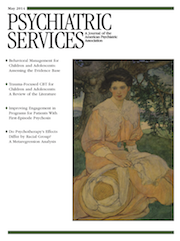The Art of Narrative Psychiatry: Stories of Strength and Meaning
Narrative therapy, as developed over the past 30 years by Michael White, David Epston, and others, has offered exciting and expansive alternatives to the traditional practice of psychotherapy (1). However, psychiatry, with its medical model and focus on disease and disorders, has seemed very distant from these innovations. SuEllen Hamkins, a psychiatrist practicing in western Massachusetts, has changed that. In this book she elegantly demonstrates how psychiatry and narrative theory not only can coexist but can enrich each other.
Dr. Hamkins starts from the observation that “we are embodied creatures,” with a biology as well as a mind. She then goes on to describe in detail an approach to psychiatry that focuses on the patient’s values and aspirations rather than on his or her deficits and failures. As befits a book on narrative therapy, she presents her argument through stories; the topic of each chapter is illustrated by an extensive discussion of her experience with a particular patient. In simple, clear, language, without jargon, she provides an absorbing, moving account of the patient’s journey from “narratives of despair and failure” to “stories of strength and meaning.” Each chapter ends with reflections by the patient, who has read Dr. Hamkin’s account of their work together.
We are treated to a vision of psychiatry that includes, but transcends, the use of medication. Decisions about treatment are made collaboratively, with medication as one option among many. In a delightful reversal, she defines compliance as the degree to which the psychiatrist complies with the patient’s preferences. The physician does not renounce her expertise concerning medication and treatment, but she never forgets that the patient is an expert in his or her experience, values, and preferences and that these are the guiding principles of the work.
This is no ivory tower theory; the stories are rooted in the realities of psychiatry as it is practiced today. The patients she presents are not easy: they were suicidal, psychotic, traumatized, untrusting, “treatment failures” who were defeated and despairing before the treatment started. There are no miracles; change happens slowly, incrementally, and often in fits and starts. One treatment takes place over 12 years and includes residential placements and hospitalizations along the way. In many cases, patients are seen infrequently and for 20 minutes at a time. This is a practice that is applicable and relevant in real life. One measure of the power of this book is that while reading it I found myself asking questions and exploring issues differently in my own practice, and I found that my practice was enriched by doing so.
SuEllen Hamkins has written a rich and inspiring book. She set out to show how narrative principles can usefully be incorporated into everyday psychiatric practice, and she has succeeded admirably. In doing so she has shown a path for psychiatry to expand beyond “medication management” and to become a source of strength and meaning for patients and practitioners alike.
1. : Maps of Narrative Practice. New York, Norton, 2007Google Scholar



